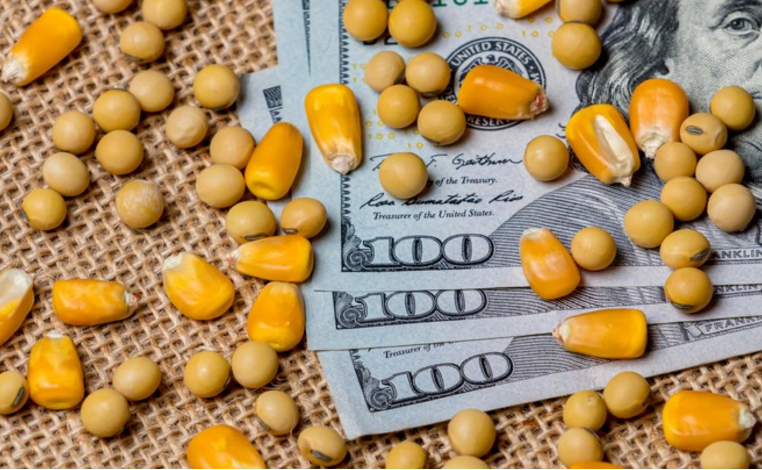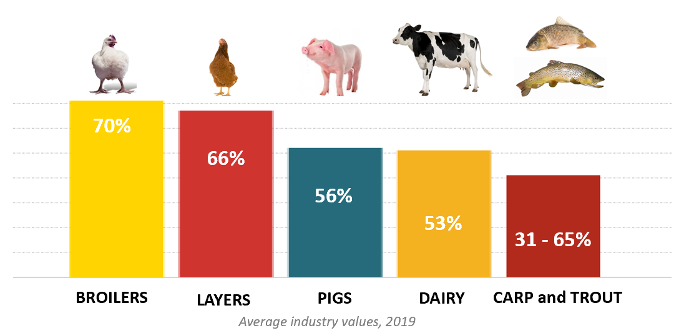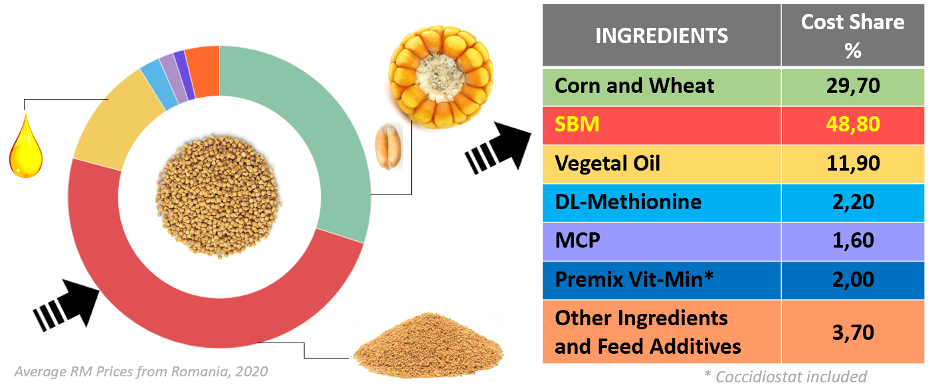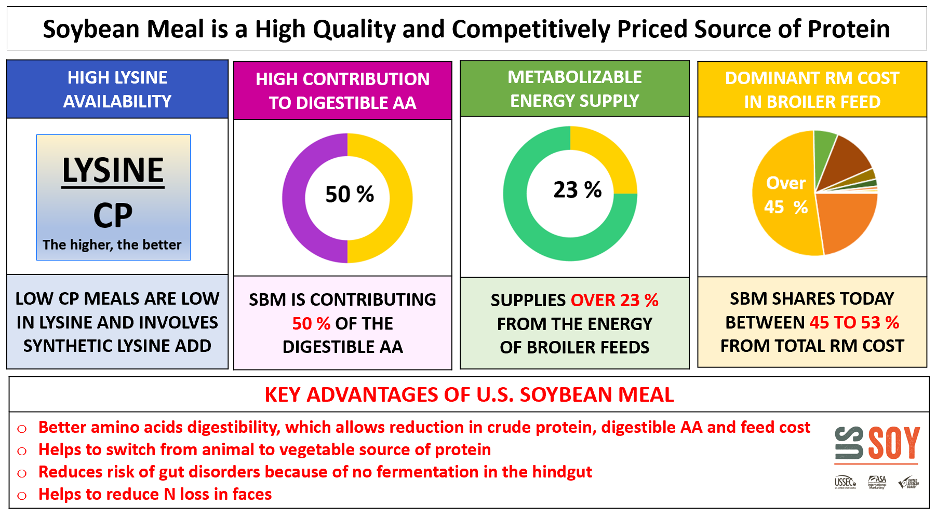Protected: Time to Revisit Soybean Meal Nutritive Value
- Category:
- Market Information

By Iani Chihaia, Country Representative - Greater Europe, Romania
In the past year, the cost of agricultural inputs has risen dramatically. The cost of manufactured compound feeds has also risen, reflecting the surging cost of raw materials, mainly grains and soybean meal, used in production.
Since the current market signals suggest that feed manufacturers will continue to face relatively high prices for the upcoming period, taking steps to limit the impact of higher feed prices should be a priority. As such, most European poultry companies shifted to focus on profitability the past year, rather than growth and expansion.
Like everywhere in the world, feed represents over 60 percent of total costs for intensive meat production systems, such as broilers, and European producers think it’s time to revisit feed costs in order to maintain profitability in meat production. Looking with fresh eyes on the economics of feed ingredients and on the relative value of different nutrient groups is one of the few ways to keep broiler production profitable during these difficult times.

Energy and amino acids are the most expensive components of the broiler diet. It is well known that approximately 25 percent of diet cost and 75 percent of decision-making is related to meeting protein needs in broiler feeds (Coon, 2015). As per recent economic evaluations of commercial broiler feeds in Romania, energy remains the most expensive component of the diet, with 100 Kcal/Kg cost estimated at US$10/ton.

By simply reviewing the economics of the ingredients in a corn-soy based commercial broiler feeding program, the nutritionists and decision makers quickly understand the importance of each raw material. In the case of using soybean meal as a single-protein ingredient, over 48 percent of raw materials cost is shared by this raw material, which is by far the dominant protein source in broiler feeding in most parts of the world.

Forward purchasing at lower prices should enable feed manufacturers to absorb part of the surging raw materials prices. However, understanding the value of raw materials and proper use of available data in feed formulation might be the silver bullet for any nutritionist and help squeeze more nutrients and increase dollar savings in feed production.
Therefore, it’s time to revisit the nutritive and energy values of soybean meal, the raw material that currently shares between 43 and 53 percent of total ingredient costs in corn-soy broiler diets.

In several regions around the world, soybean meal is the sole source of protein. It has a competitive essential amino acid profile with high lysine availability and a good lysine to protein ratio.
The fact that not all soybeans are created equal has to be recognized by broiler nutritionists. Looking strictly at the crude protein levels when evaluating soy quality can be misleading. The nutritional value of a protein instead depends on the combination of the amino acids it contains – monogastric animals, after all, require amino acids and not crude protein.
The results of a meta-analysis published in September 2020 studied the relation between the country of origin of the beans, including Argentina, Brazil, U.S. and India, and the chemical composition, protein quality and nutritive value of the soybean meals. The study demonstrated that Brazilian soybean meal had more crude protein, neutral detergent fiber, raffinose and iron, but less sucrose, stachyose and K contents than the U.S. or the Argentinian soybean meal. However, per unit of protein, Lys, Met, Thr and Cys concentrations were greater for the U.S. and Argentinian meals than for the Brazil and Indian meals. The higher amino-acid levels in the U.S. soybean meal should translate to significant dollar savings under commercial conditions and increase profitability of broiler production.
It is highly recommended that nutritionists use matrices with different nutrient composition for soybean meals of different origins in the formulation of the broiler diets. When analyzing the impact of escalating production costs on broiler production, looking beyond crude protein levels and focusing on amino acid profiles is of utmost importance.